These gluten free scones are light and delicious, without being dry or crumbly. They are made without xanthan gum in the recipe, instead there is egg which helps to provide extra lightness and structure.
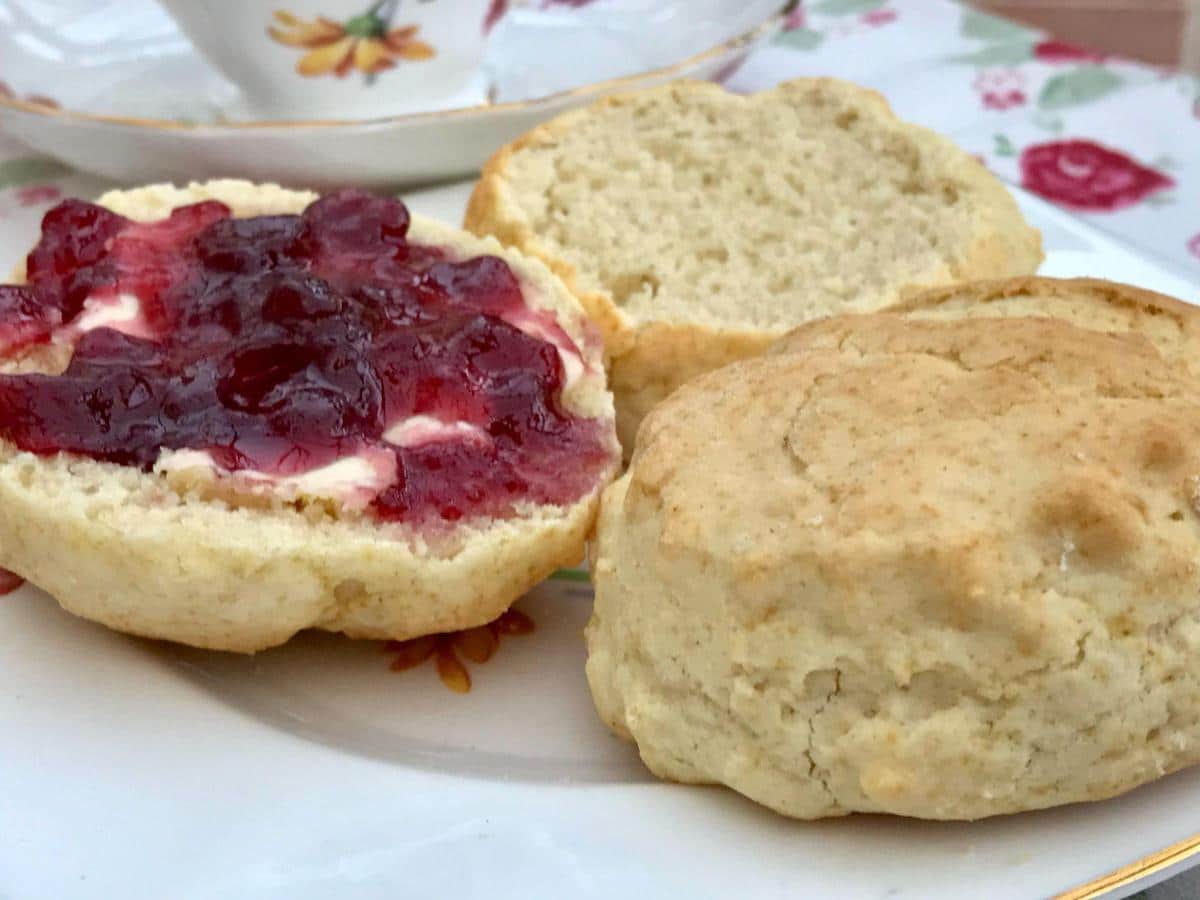
The smell and taste of warm homemade scones is so delicious, and there's no need to miss out on this teatime treat if you or your friends are gluten free. This recipe works well because:
- The ingredients are simple. Other than a gluten free blend of plain flour, which is easily available at the supermarket, you're likely to have all the other ingredients already.
- You don't need any special equipment. Just one bowl and a baking tray. If you don't have cookie cutters, just cut the scones into triangles.
- The recipe is really quick. If you fancy an afternoon treat, you can literally have these on the table within half an hour. (If you really pushed for time, you could also try these gluten free drop scones which are cooked on the stovetop.)
- Most of all, these gluten free scones are wonderful to eat, either with butter, or laden with jam and clotted cream.
Ingredients
Flour. In this recipe, I've used plain flour (also known as all purpose flour). Mine was a standard supermarket gluten free blend which has a mix of rice, potato, tapioca, maize and buckwheat flours. If you prefer, you could use self raising flour (although note that some of the GF self raising flours already have xanthan gum added). If you do use self raising flour, you'll just need 1 teaspoon of baking powder for this quantity of mixture.
Baking powder. If you are using plain flour, then baking powder is essential for rise. Don't forget to check that your baking powder is gluten free - most are, but it's worth double checking.
Butter, salted or unsalted. You can use butter straight from the fridge for this recipe. Cut it into small pieces so that it mixes in more easily. If you prefer, you could use a dairy free alternative to butter, but you need a fat which is solid at room temperature.
Sugar. I've added just a tablespoon of sugar to the recipe which adds a hint of sweetness. Ideally use castor sugar, either white or golden. If you prefer, you could sweeten the scones with a spoonful of honey - add it along with the egg. If you want savoury gluten free scones, omit the sugar and add a quarter of a teaspoon of salt instead.
Egg - the vital binding ingredient which will add lightness and structure. I have tried omitting the egg as an experiment, but the scones turned out quite flat. They also spread out on the baking tray as they did not have enough structure.
Milk. The scones need some additional liquid to bind the mixture together. With a medium sized egg, I needed 75 ml of milk, but this may vary slightly with both the size of your egg and the blend of your flour. You can use a dairy free milk if you prefer.
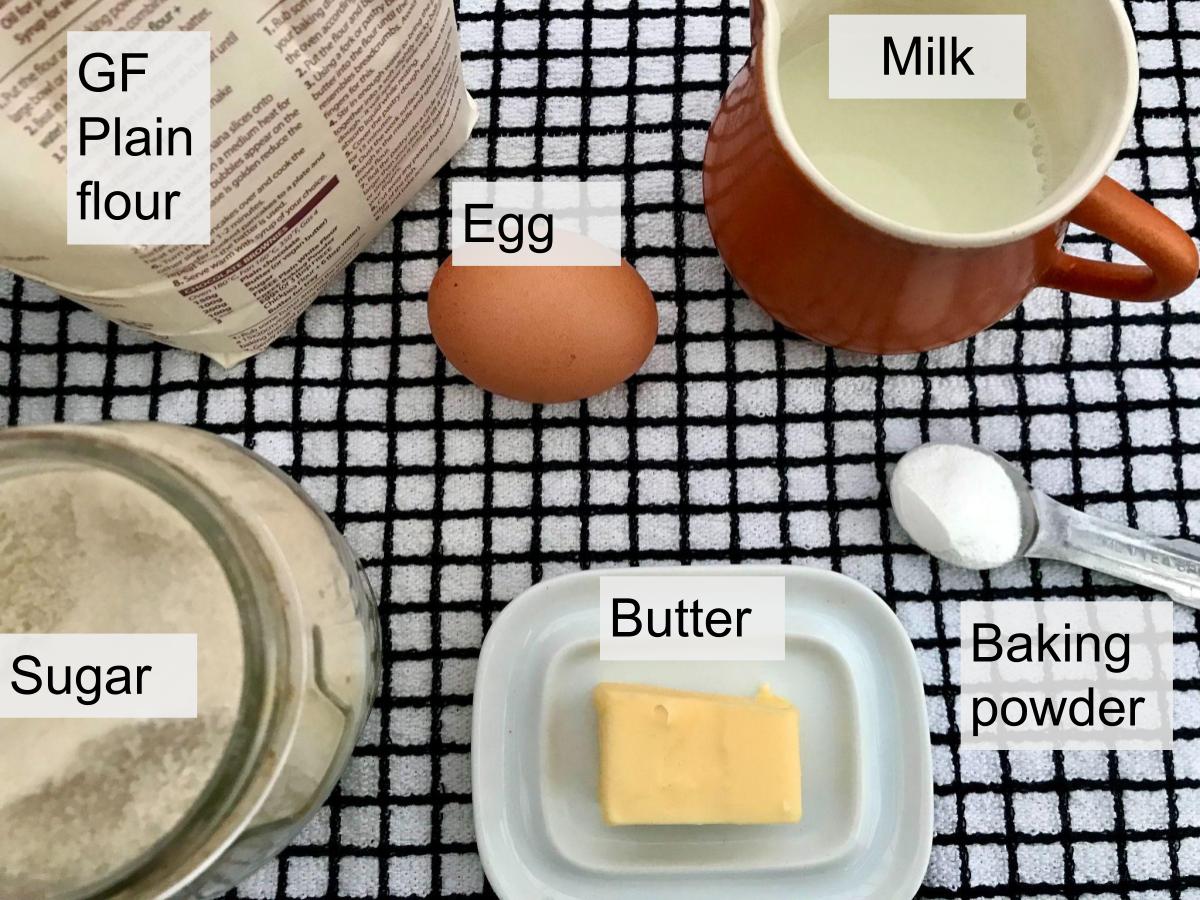
Optional ingredients
Fruit scones are a classic, so if you like, add 50 g of sultanas or raisins to the recipe.
How to make gluten free scones
Preheat the oven to 210 degrees (190 fan). Scones do need a hot oven to rise properly. Either lightly grease, or line a baking tray with parchment paper.
Tip the flour and the baking powder into a large bowl. I don't usually sieve the flour as the gluten free flour that I use is very fine and doesn't clump together. Add the butter which has been cut into small pieces. Rub the butter into the flour using your fingertips and thumbs. (Here's a BBC video if you want to see a demonstration about rubbing butter into flour.) The mixture should look like breadcrumbs. Stir in the sugar.
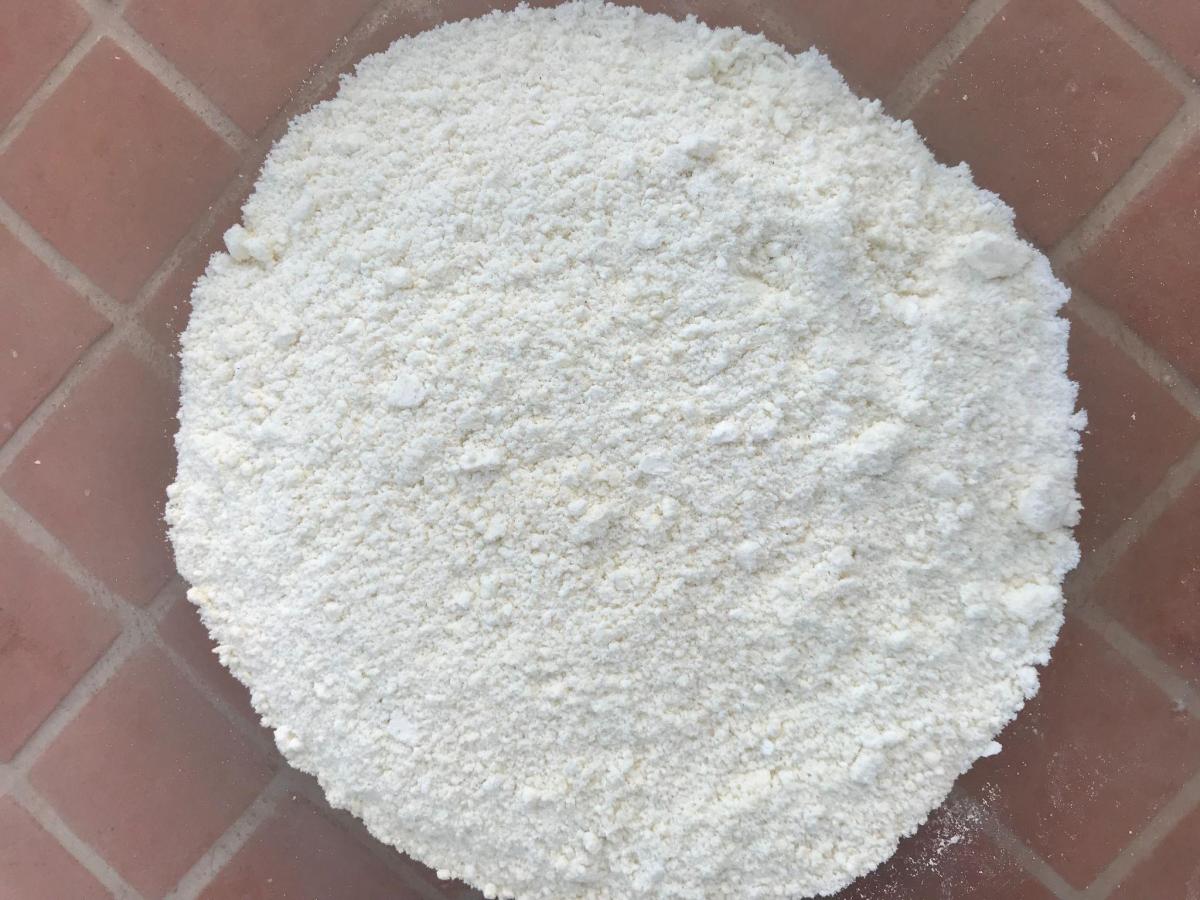
Add the beaten egg, and use a knife to mix in. The mixture will start to clump slightly. Add nearly all of the milk, and use the knife to bring the mixture together. Use the remainder of the milk if needed. The dough should hold together, but not be so sticky that you can't easily handle it. Gently bring the mixture into a ball with your hands.

Place the dough on a floured board or work surface. Using your hands, flatten it down until it is about 2.5 cm (or an inch) thick. You won't really need a rolling pin, as it's so easy to just flatten the mixture by hand. Although the dough will rise as it bakes, you do want to start off with plenty of height, so make sure that you don't roll out the mixture too thinly.
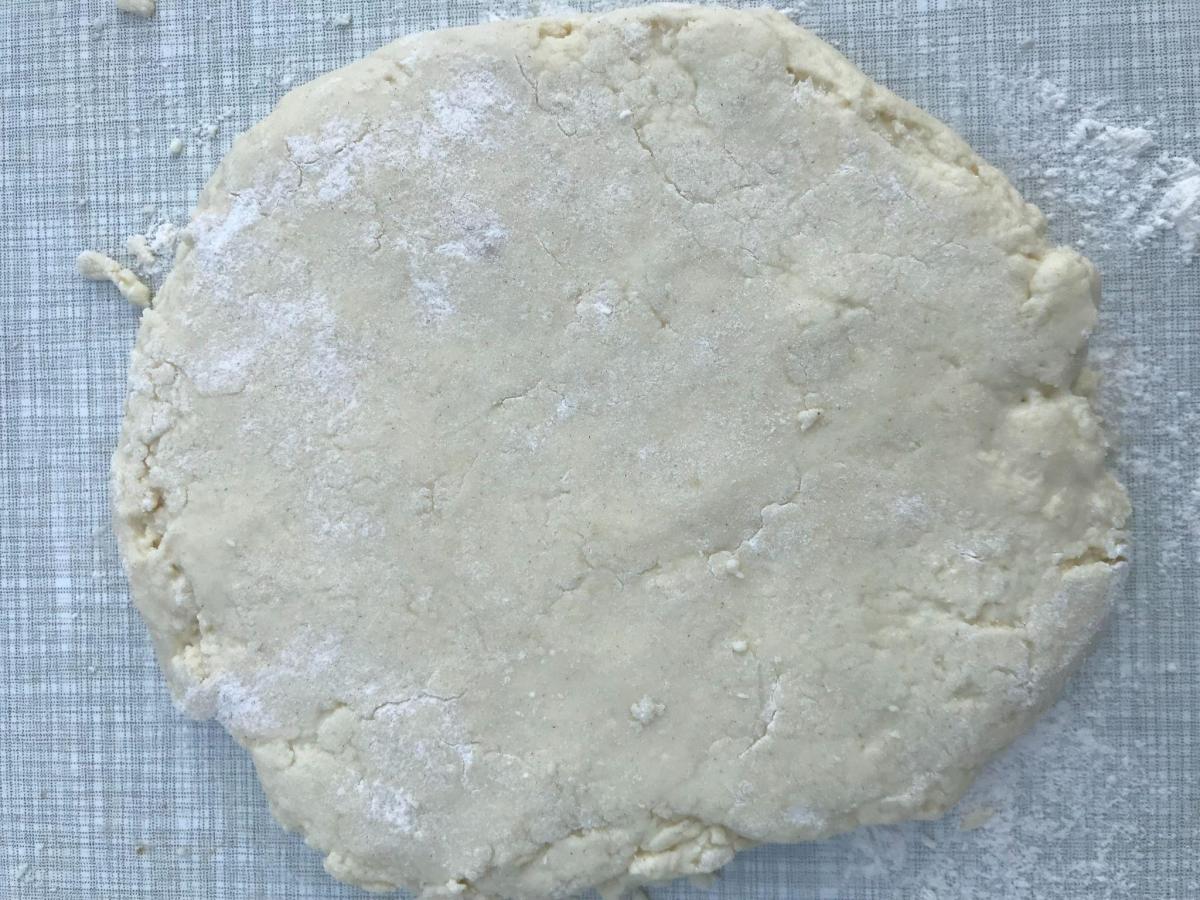
Cut the scones out with a cookie cutter. I used a small 2 inch cutter, which made 12 little scones, but if you prefer you can make less larger scones. I find that the gluten free dough is a little more delicate, so take care as you cut it so that it doesn't twist and tear. You can reshape the dough once or twice to use up the trimmings, but be gentle. Overworked dough could end up flat and dense.
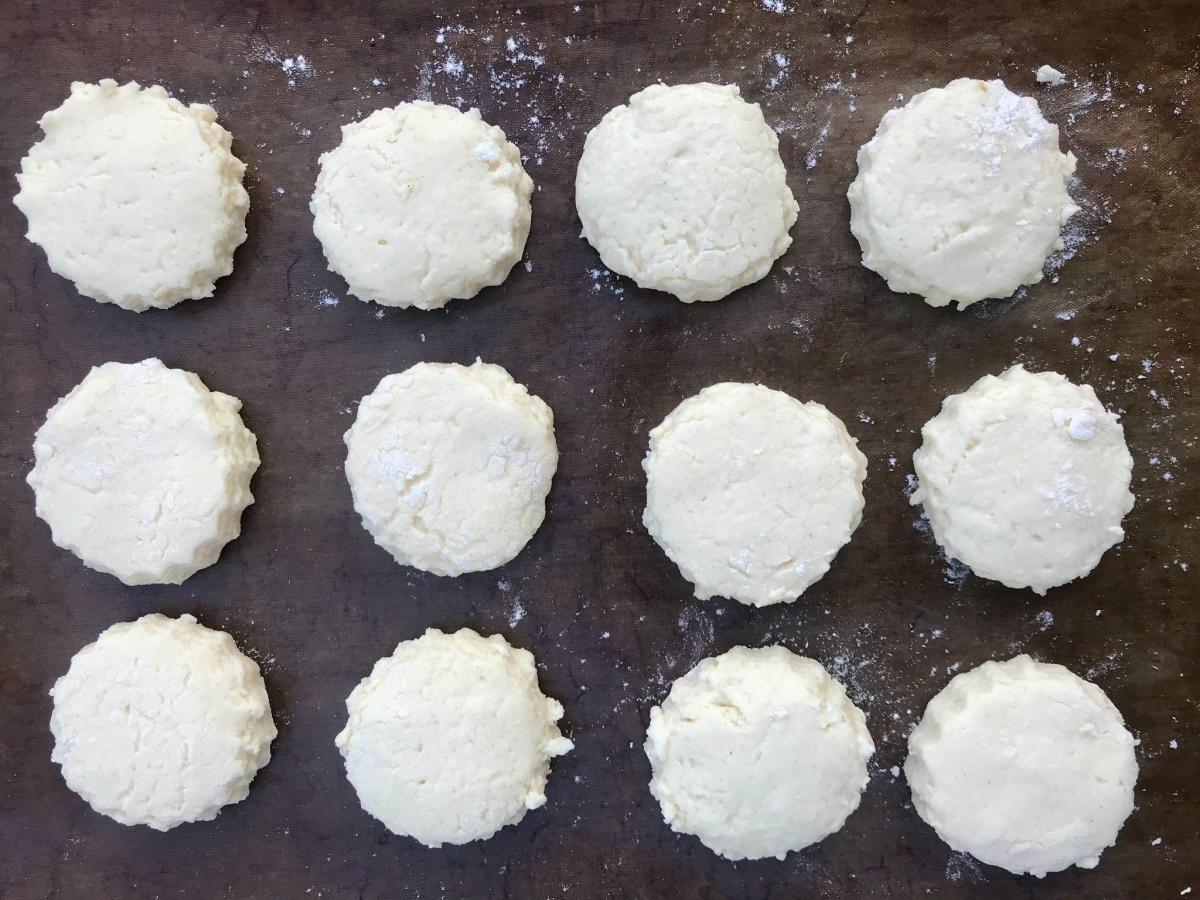
If you prefer, rather than using a cookie cutter, you can shape the dough into a thick disc and cut into 8 wedges.
Transfer the scones to the greased baking sheet and bake in the preheated oven for 12-15 minutes. Check halfway, and if necessary turn the tray around. Gluten free flour will darken quite quickly, so keep an eye on them. Cool on a wire rack.
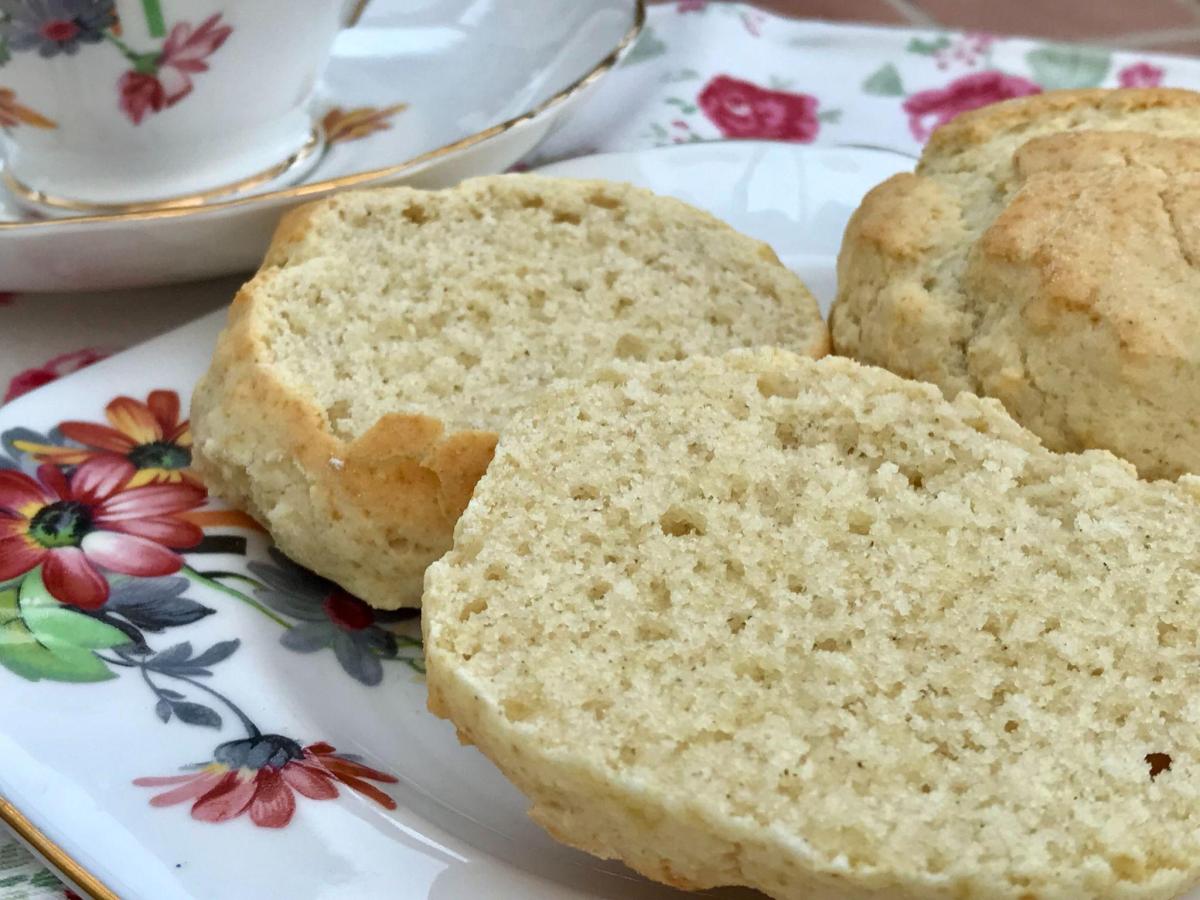
Making gluten free scones with a food processor
If you prefer, you can use a food processor to make the scone mixture. Blitz the dry ingredients with the butter until the mix looks like breadcrumbs. Then add the egg and pulse gently. Add most of the milk and pulse until the mixture starts to come together. Add the remaining milk if necessary to bring to mixture together into a ball.
How to serve
The classic way to serve scones is with jam and thick clotted cream. They are particularly delicious with this low sugar berry jam which you can make in minutes. And because it's low in added sugar, you can add an extra big spoonful;)
Savoury gluten free scones (omit the sugar) are a perfect accompaniment to soup. Or try them with cream cheese and smoked salmon. You can also make gluten free cheese scones. And savoury scones can also be used to make a delicious turkey cobbler.
How to store
Scones are best eaten when they are fresh from the oven, and these gluten free scones are no exception. If anything, gluten free bakes can go stale more quickly, so if you're not planning to eat them straight away, pop them in the freezer in an airtight container.
Frequently asked questions
Xanthan gum is a food additive which is sometimes used in gluten free baking to help replicate the soft stretchy texture that gluten provides. Xanthan gum has been shown to be safe, but some people prefer to avoid it, particularly if they have a sensitive digestive system.
Not all scone recipes contain eggs. However, in this recipe, eggs are vital to provide lift and structure.
Provided that you added the right amount of baking powder and used a hot oven, the main reason for flat scones is rolling the dough too thinly. The dough should be at least an inch (2.5 cm) thick, and if you want really tall scones, even thicker.
It is important to measure the baking powder carefully. Too much baking powder can result in a bitter taste.
Yes. Use a dairy free replacement for butter which is solid at room temperature, and a dairy free milk such as oat or almond milk.
No! British scones are made with a lower proportion of butter, and are lighter and plainer. British scones are often served with jam and cream, and can have dried fruit added. American scones, which are richer and sweeter, tend to be eaten on their own. These gluten free scones are a British recipe.
Other gluten free bakes you might enjoy
You might also like this post with 27 recipes for a gluten free afternoon tea.
Have you tried this recipe? Please leave a rating and/or comment at the bottom of the page. Your feedback and questions are much appreciated.
You can also follow me on Pinterest and Facebook. Or subscribe to the newsletter to receive delicious healthy recipes straight to your inbox.
Recipe
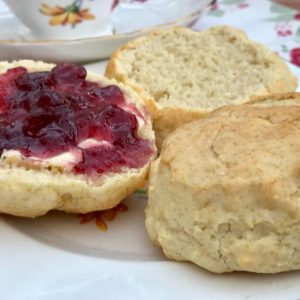
Gluten Free Scones
Ingredients
- 200 g plain gluten free flour
- 3 teaspoon gluten free baking powder
- 50 g butter cut into small pieces
- 1 tablespoon castor sugar
- 1 medium egg beaten
- 75 ml milk
Instructions
- Preheat the oven to 210 degrees (190 fan). Grease a baking sheet, or line it with baking parchment.
- Add the flour and baking powder to a large bowl. Add the butter, and rub in using your fingertips and thumbs until the mixture looks like fine breadcrumbs.
- Stir in the sugar.
- Add the beaten egg, and mix in with a knife. Add most of the milk, and continue to mix until the mixture sticks together. If necessary add the remainder of the milk until you can gently form the mixture into a ball with your hands.
- Place the dough on a floured worktop or board. With your hands, gently press it out until it is 1 inch (2.5cm) thick. Use a cookie cutter to cut out the scones, re-rolling the dough as necessary. Transfer to the baking sheet.
- Bake for 12-15 minutes until golden. Check partway through, and turn the tray if necessary. Cool on a wire rack.
Notes
- If you want to use self raising flour instead of plain flour, cut the baking powder down to just 1 teaspoon.
- For gluten free dairy free scones, use a solid dairy free block instead of butter, and dairy free milk.
- If you prefer, you can sweeten the scones with a tablespoon of honey rather than sugar.
- For gluten free savoury scones, omit the sugar and add a quarter teaspoon of salt.
- The amount of milk that you need might vary slightly, depending on your flour and the size of your egg. I used 75ml milk with a medium size egg.
- Rather than using a cookie cutter, you can shape the dough into a 1 inch thick circle and cut into 8 triangles.
- Always eat scones when they are fresh. If you are not planning to eat them the same day, freeze them in an airtight container.
Nutrition
One serving is 2 small scones.
Please note nutritional information is per serving and is provided for guidance only.

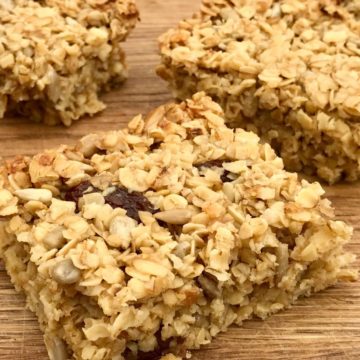
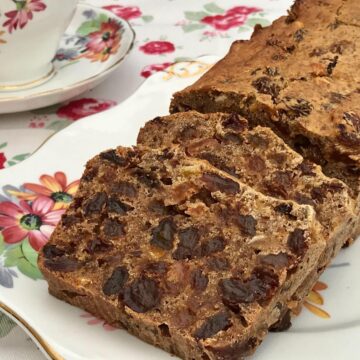
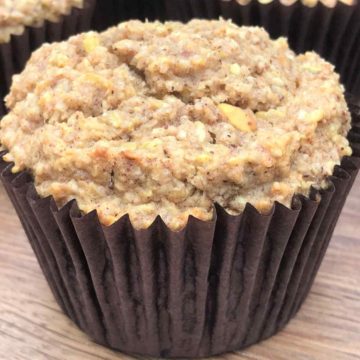
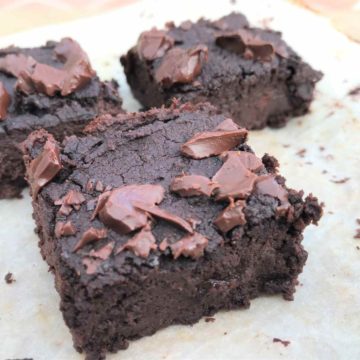

Nixta
Do you need to let the scones cool before freezing them?
Wendy Faulkner
Hi, yes let the scones cool completely before wrapping and placing them in the freezer.
Karen
Thanks for the recipe 🙂 To make fruit scones, would it be possible to add sultanas without adjusting the recipe?
Wendy Faulkner
Hi, yes you can. Just stir 50g sultanas into the dry mixture before you add the milk and egg. Enjoy:)
Karen
Thank you
MRS J BYRNE
I’ve just made a batch of these and I added sultanas to the mix and they turned out great 👍🏻
Wendy Faulkner
Thank you, that's lovely to hear:) Glad you enjoyed your gluten free sultana scones!
Jode
Brilliant recepie, worked perfectly
Wendy Faulkner
Thank you, I'm so glad you liked it.
Ann
Can i use rice flour in my scones?
Wendy Faulkner
Hi, I haven't tried this recipe with all rice flour. But I think the scones would be incredibly crumbly as rice flour is usually used in a blend with other types of flour and thickeners.
Haley
Can you freeze the dough and bake it at a later time?
Wendy Faulkner
Hi there. I've never personally frozen this unbaked dough, only the cooked scones. However, I see no reason why it wouldn't work, so it's probably worth giving it a try! Let me know how it goes.
Greta
This was the first time I've used GF flour and they worked really well. My family couldn't tell any difference.
Wendy
Well, done, I'm glad you had a good result. Thanks for letting me know.